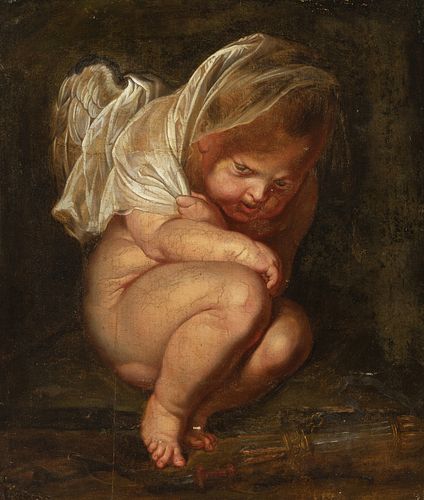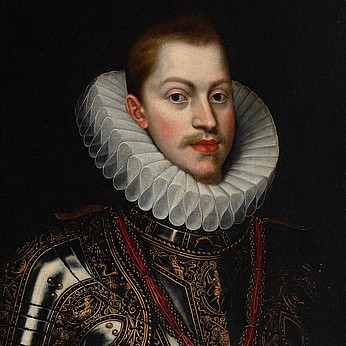Flemish school, Follower of PIETER PAUL RUBENS (Siegen, Germany, 1577 - Antwerp, Belgium, 1640); 17th century. "Cupid." Oil on canvas. Relined.
Lot 20
About Seller
Setdart Auction House
Carrer Aragó 346
Barcelona
Spain
Setdart Subastas was born in 2004 and is currently the first online art auction in Spain with solidity, prestige and reliability guaranteed by our more than 60,000 users. Setdart has a young, dynamic and enterprising team ready to successfully manage the purchase and sale of art works through custom...Read more
Estimate:
EUR€2,500 - EUR€3,000
$2,604.17 - $3,125
Absentee vs Live bid
Two ways to bid:
- Leave a max absentee bid and the platform will bid on your behalf up to your maximum bid during the live auction.
- Bid live during the auction and your bids will be submitted real-time to the auctioneer.
Bid Increments
| Price | Bid Increment |
|---|---|
| EUR€0 | EUR€10 |
| EUR€200 | EUR€25 |
| EUR€500 | EUR€50 |
| EUR€1,000 | EUR€100 |
| EUR€3,000 | EUR€200 |
| EUR€5,000 | EUR€500 |
| EUR€10,000 | EUR€1,000 |
| EUR€20,000 | EUR€2,000 |
| EUR€50,000 | EUR€5,000 |
About Auction
By Setdart Auction House
Nov 24, 2021
Set Reminder
2021-11-24 09:00:00
2021-11-24 09:00:00
America/New_York
Bidsquare
Bidsquare : Old Masters, Day 1
https://www.bidsquare.com/auctions/setdart-auction-house/old-masters-day-1-7873
Setdart Auction House sofia@setdart.com
Setdart Auction House sofia@setdart.com
- Lot Description
Flemish school, Follower of PIETER PAUL RUBENS (Siegen, Germany, 1577 - Antwerp, Belgium, 1640); 17th century. "Cupid." Oil on canvas. Relined. Presents repainting. Measurements: 51 x 44 cm. The image represented here can be identified with the portrait of the God Cupid due to its wings. Cupid, equivalent to the Greek Eros, was the primordial god of amorous desire, also related to fertility. The most widespread myth describes him as the son of Venus and Mars, since he unites love and violence in his nature. In Roman art he could be represented as an ephebus or as a child, winged and armed with bow and arrows. Sometimes he is also represented blindfolded, symbol of the blindness of amorous passion. Other of his iconographic attributes are the flaming torch and the rose, emblem of the delicious but fleeting pleasures he procures. Her wings are also a symbol of transience. Due to its formal characteristics, this painting can be related to the circle of Peter Paul Rubens, a painter of the Flemish school who, however, competed on equal terms with contemporary Italian artists, and enjoyed a very important international transcendence, since his influence was also key in other schools, as is the case of the passage to the full baroque in Spain. Although born in Westphalia, Rubens grew up in Antwerp, where his family originated. After his training, Rubens joined the Antwerp painters' guild in 1598. Only two years later he made a trip to Italy, where he stayed between 1600 and 1608. During these decisive dates, the young Flemish master was able to learn first-hand about naturalism and classicism, the works of Caravaggio and the Carracci.
- Shipping Info
-
In-house shipping available. Please inquire at admin@setdart.com.
-
- Buyer's Premium



 EUR
EUR CAD
CAD AUD
AUD GBP
GBP MXN
MXN HKD
HKD CNY
CNY MYR
MYR SEK
SEK SGD
SGD CHF
CHF THB
THB
















